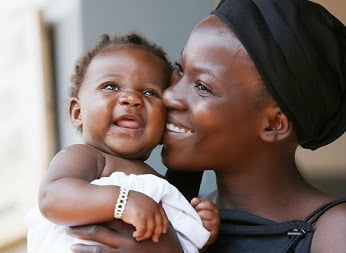Social Good Summit, New York – “Malaria will be the first disease beaten by mobile.” That’s what Martin Edlund, the CEO of Malaria No More, told the buzzing crowd during his Social Good Summit talk earlier today. Edlund and his organization view the mobile phone as a game-changer in the fight against malaria, a disease that killed 660,000 people last year – primarily women and children in Sub-Saharan Africa. Edlund explained that malaria “thrives on bad information” and lack of data. And mobile phones are helping connect the dots between all the other malaria-fighting tools. Bednets, diagnostic tests, cheap treatment, reliable drugs – key elements of eliminating malaria and reducing mortality and morbidity rates – are “turbocharged” through the use of mobile phones. By the end of 2015, there will be 1 billion mobile phones on the African continent. So, what does fighting a disease with technology look like? And how does it work? Edlund cited a few examples of how Malaria No More leverages mobile phones to beat the disease.
In addition to leveraging mobile technology, Malaria No More’s work hinges on bringing together key partners from all sectors. In Cameroon, for example, Malaria No More partnered with Exxon Mobile and MTN. Through the partnership, 6 million MTN subscribers would receive health related public service announcements. Didier Drogba, a star football player in Sub-Saharan Africa, signed his name on text messages dispatched to the millions of subscribers – “its 9pm – are you and your family safely sleeping under your net?” The results speak for themselves – a 12% increase in bednet use, which translates into 500,000 people sleeping under their nets who otherwise may be getting a potentially deadly mosquito bite. Indeed, as Edlund noted, better information and social communications has helped support an overall 33% decline in malaria mortality rates over the last 7 years – a dramatic improvement, but still a long way to go.
In Tanzania, Malaria No More equipped 129 health workers with mobile phones and a simple text based way to report whether their local clinic had enough malaria treatment drugs. At the beginning of the program, 26% of clinics were stocked out of lifesaving drugs – that’s fully 1 in 4 clinics unequipped to deal with sick patients needing treatment. A few months later, the percentage of clinics who were fully stocked was reduced to less than 1%, equivalent to a 97% reduction of clinics being stocked out.
Another example of the power of mobile phones comes from Nigeria, which accounts for 30% of malaria deaths worldwide, and where informal markets were flooded with substandard or fake malaria drugs, making treatment ineffective at best and potentially very damaging and dangerous for the patient. With 90% of malaria drugs sold outside of pharmacies, fighting against counterfeit drugs is no small task. Enter Sproxil – a company which developed a system for consumers to easily authenticate the drugs they are purchasing via their mobile phone. Each box of drugs has a scratch off label which reveals a shortcode. The consumer can text the shortcode and receive immediate confirmation whether it’s real or fake. This has “changed the landscape” of malaria in Nigeria, said Edlund. Since the service was launched, 4.5 million people have texted and confirmed their malaria drugs. But beyond the obvious benefits of this service, it’s also helped turn something invisible – malaria in Nigeria – into millions of data points that can be used to further the fight against the disease.
In addition to these programs and services, Malaria No More is also leveraging the power of mobile phones and social connections. With their Power of One campaign ($1 dollar = 1 malaria treatment kit = 1 child saved), Malaria No More is helping to close critical treatment gaps, and help prevent 3 million children in Zambia from getting morbidly sick or dying from malaria in the next 3 years. Donors can follow the journey of their dollar and how it’s used to save a life. This program, in partnership with the Zambian government, records on a weekly basis the number of kids treated at centers across the country. Again, turning new information about the disease into key data points.
Listening to Edlund, it’s difficult not to believe that mobile is, indeed, transforming the malaria fight in Africa, and that of all the tools in the malaria fight, the cell phone is what may “tip the balance against this disease.” Using a powerful model of multi-stakeholder engagement – creating partnerships that involve different private sector actors, governments and civil society – and leveraging the power of existing technology already in the hands of hundreds of millions of users, Malaria No More and partners are on their way to helping solve one of the major public health crisis of our times.
